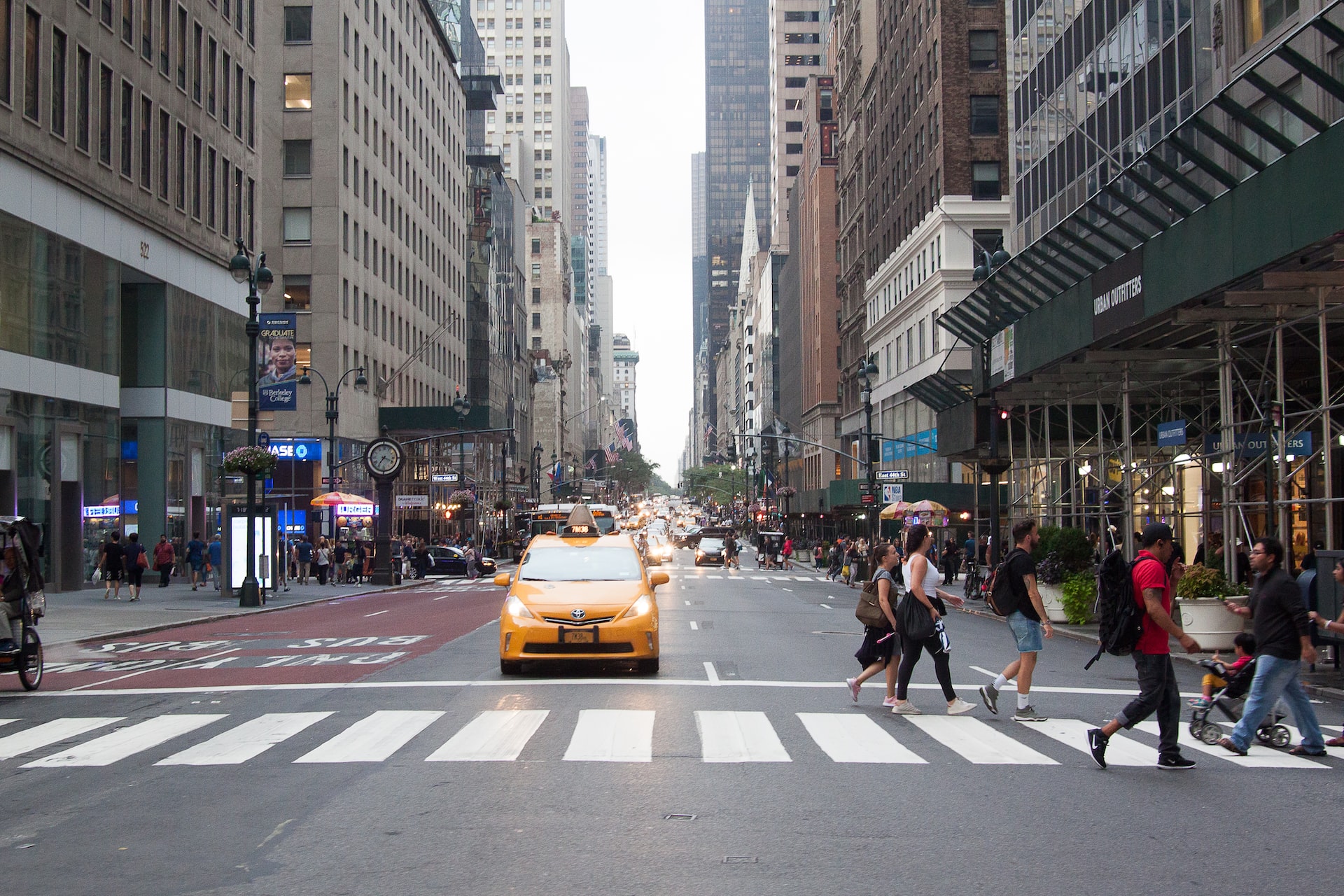Pedestrian crashes are a serious issue in the United States, accounting for nearly half of all traffic fatalities.
While there are many contributing factors to pedestrian crashes, inadequate lighting at crosswalks is a significant factor.
In this blog post, we will discuss how crosswalk lighting can be used to improve safety for pedestrians and reduce the number of pedestrian crashes.
First, what is overhead crosswalk lighting and pedestrian warning beacons?
Crosswalk lighting is a type of street lighting designed to improve crosswalks’ visibility for pedestrians and drivers. Crosswalk lighting typically consists of a series of light fixtures that are mounted on poles near pedestrian crosswalks.
The light fixtures are typically equipped with high-intensity discharge lamps, which provide a bright, white light that falls on the vertical surface of the crosswalk. In addition to improving pedestrian visibility, crosswalk lighting can also help to increase the conspicuity of crosswalks, making them more visible to drivers and leading to improved driver-yielding behavior.
Flashing warning beacons that are activated by pedestrians alert drivers to the presence of pedestrians at a crosswalk. These allow drivers to yield to pedestrians while signifying properly signaling motorists.
To summarize, crosswalk lighting is important because it can:
- Help guide pedestrians to safe crossing locations
- Improve the visibility of crosswalks for drivers
- Increase the conspicuity of crosswalks
Crosswalk safety can also be increased by the flashing beacons to signal to drivers.
How does crosswalk overhead lighting & warnings help to reduce pedestrian fatalities?
According to a study by the Federal Highway Administration, crosswalk overhead lighting can help to reduce all types of injury crashes by as much as 27%. Lighting fixtures that are correctly installed and maintained can help to improve pedestrian safety.
The study found that pedestrians are much more likely to be seen by drivers when illuminated by overhead lights, making it less likely that they will be struck by a vehicle. The study also found that crosswalk overhead lighting can help to increase driver yield rates, further decreasing the risk of pedestrian injury or death.
Ambient light levels and warning lights are critical factors in pedestrian visibility, and crosswalk lighting can significantly improve ambient light levels at night. As a result, crosswalk overhead lighting is an important safety measure that can help to reduce pedestrian fatalities.
Pedestrian Visibility and Nighttime Crashes
According to the National Center for Health Statistics (NCHS), nearly 8000 pedestrians died in traffic or non-traffic incidents in 2020. 76% of these fatalities occurred in darkness and nighttime.
Poor lighting is a major contributing factor to pedestrian fatalities. When pedestrians are not visible to drivers, the risk of being involved in a crash increases.
To improve pedestrian visibility at night, crosswalks should be equipped with light fixtures designed to cast light on the vertical surface of the crosswalk. Overhead lighting design principles should be followed to ensure the light is distributed correctly across the crosswalk. Vertical illuminance levels should be maintained at or above 16 lux or greater.
5 Tips On How To Improve Pedestrian Safety At Night
As any city-dweller knows, pedestrian safety is a major concern. With cars whizzing by at all hours of the day and night, it can be easy to feel like you’re in constant danger.
However, there are some steps that can be taken to help improve pedestrian safety.
1. Install sufficient lighting & pedestrian-activated warning beacons in high-traffic areas
One of the most important is to ensure that there is sufficient lighting in high-traffic areas. This will help pedestrians to see and be seen, making it less likely that they’ll be involved in an accident.
Rectangular Rapid Flashing Beacons (RRFBs) are an effective way to improve pedestrian safety, especially at night. It’s an effective tool to increase driver awareness and yield to pedestrians in crosswalks. RRFBs is just one of the many ways you can light up an area to make it safer for pedestrians.
2. Improve signage and markings
Poorly designed or unobtrusive signage can confuse and increase the risk of accidents. In addition, faded or damaged pavement markings are often difficult to see, especially at night.
As a result, it is important to ensure that all signage is clear and visible, and that pavement markings are bright and well-maintained.
3. Install speed bumps and reduce speed limits in areas with high pedestrian traffic
Research has shown that traffic-calming measures such as speed bumps and speed limit signs can help to reduce the incidence of pedestrian accidents.
By slowing down traffic and making drivers more aware of their surroundings, these measures can make it easier for pedestrians to cross safely. Speed bumps and speed limit signs should be installed in areas where pedestrian traffic is high and accidents are more likely to occur.
4. Implement public education campaigns
Public education campaigns can help to raise awareness of the importance of pedestrian safety. These campaigns can educate drivers on the need to yield to pedestrians and can also teach pedestrians how to safely cross the street.
Public education campaigns should be targeted to areas where pedestrian traffic is high and accidents are more likely to occur.
5. Improve law enforcement efforts
Improved law enforcement efforts can help to make pedestrians feel safer on the streets.
By increasing the presence of police officers in high-traffic areas, pedestrians will feel more secure crossing the street. In addition, law enforcement can also help to educate pedestrians on the importance of using crosswalks and following traffic laws.
By working together, law enforcement and pedestrians can help to make the streets safer for everyone.
Note: This blog post is part of our on-the-road series, which is designed to help motorists, traffic managers and everyone in between with common road safety tips & transportation information. Got a question or topic you would like to know more about? Reach out to us and let us know!



